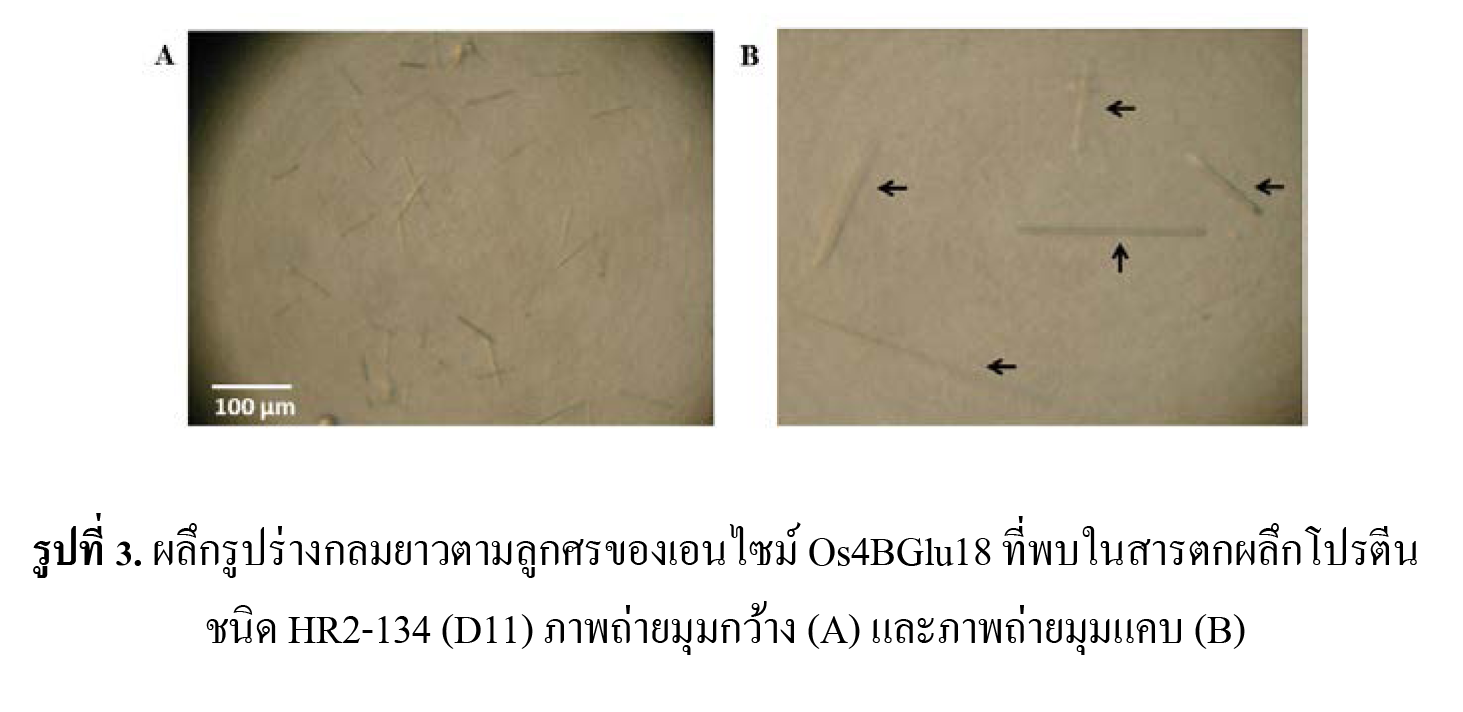Crystallization and X-ray diffraction analysis of rice Os4BGlu18
Keywords:
rice Os4BGlu18, crystallization, X-ray diffractionAbstract
Rice Os4BGlu18 was proposed to be a monolignol β-glucosidase and has been shown to hydrolyze the monolignol glucoside substrates, coniferin, syringin, and p-coumatyl alcohol glucoside, with higher catalytic efficiency than other natural substrates. The Os4BGlu18 protein was produced as a thioredoxin-His6 fusion protein in Escherichia coli and purified by immobilized metal affinity chromatography (IMAC). The N-terminal thioredoxin-His6 tag was cutoff and the protein further purified by a second IMAC step. Screening in microbatch crystallization found that Os4BGlu18 could be successfully crystallized to form many crystals with rod shape. The rod shaped crystals were grown in a precipitant solution containing 0.1 M Tris-HCl, pH 8.5, and 25% polyethylene glycol 3350 after 3 weeks of incubation at 15ºC. The crystals of free Os4BGlu18 and its complex with 2-deoxy-2-fluoroglucose (G2F) could diffract X-rays at the National Synchrotron Radiation Research Center (NSRRC), Taiwan with nominal resolutions of 6.5 and 7.0 Å, respectively. The crystallographic analysis of free Os4BGlu18 showed that it was indexed to the orthorhombic P212121 space group, and had the unit cell parameters a=163.8 Å, b=167.4 Å, c=240.2 Å. For the G2F complex, it was indexed to the orthorhombic P42212 space group, and had the unit cell parameters a=164.5 Å, b=164.5 Å, c=241.0 Å.


